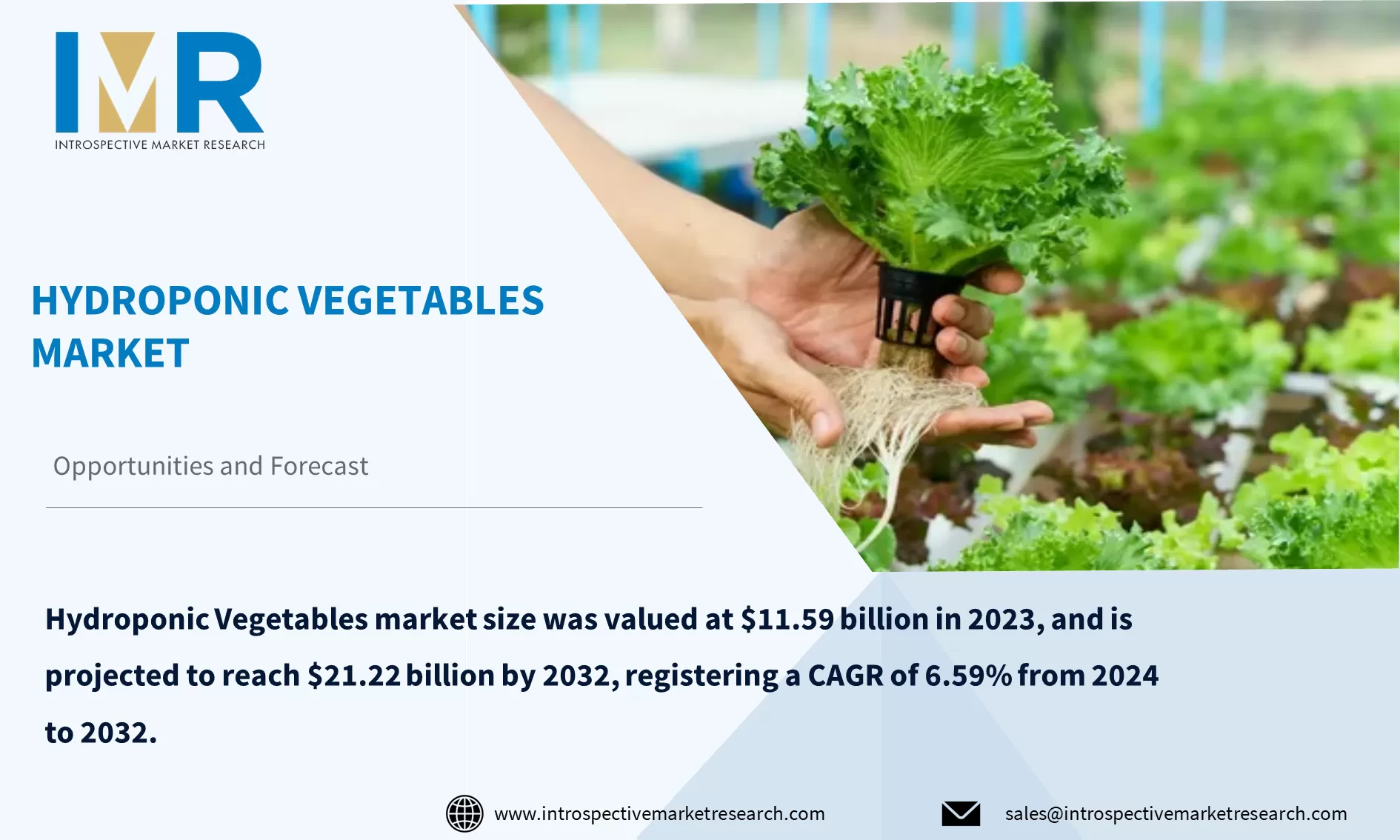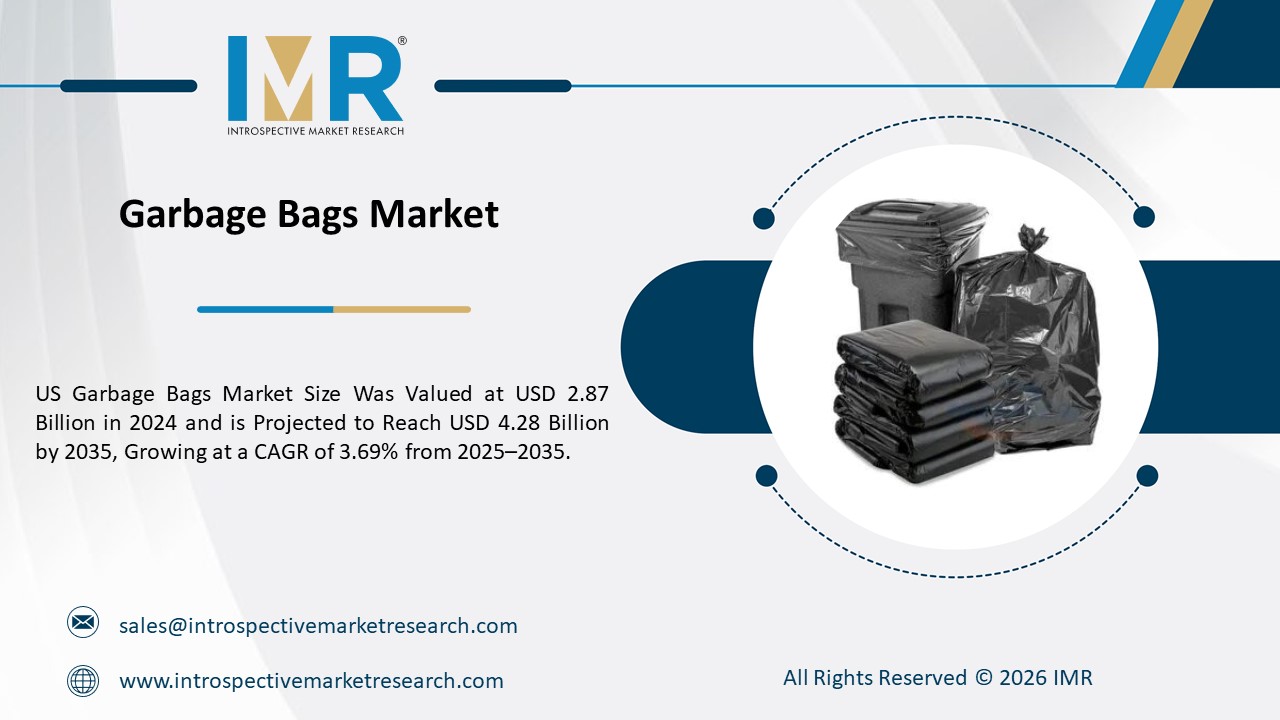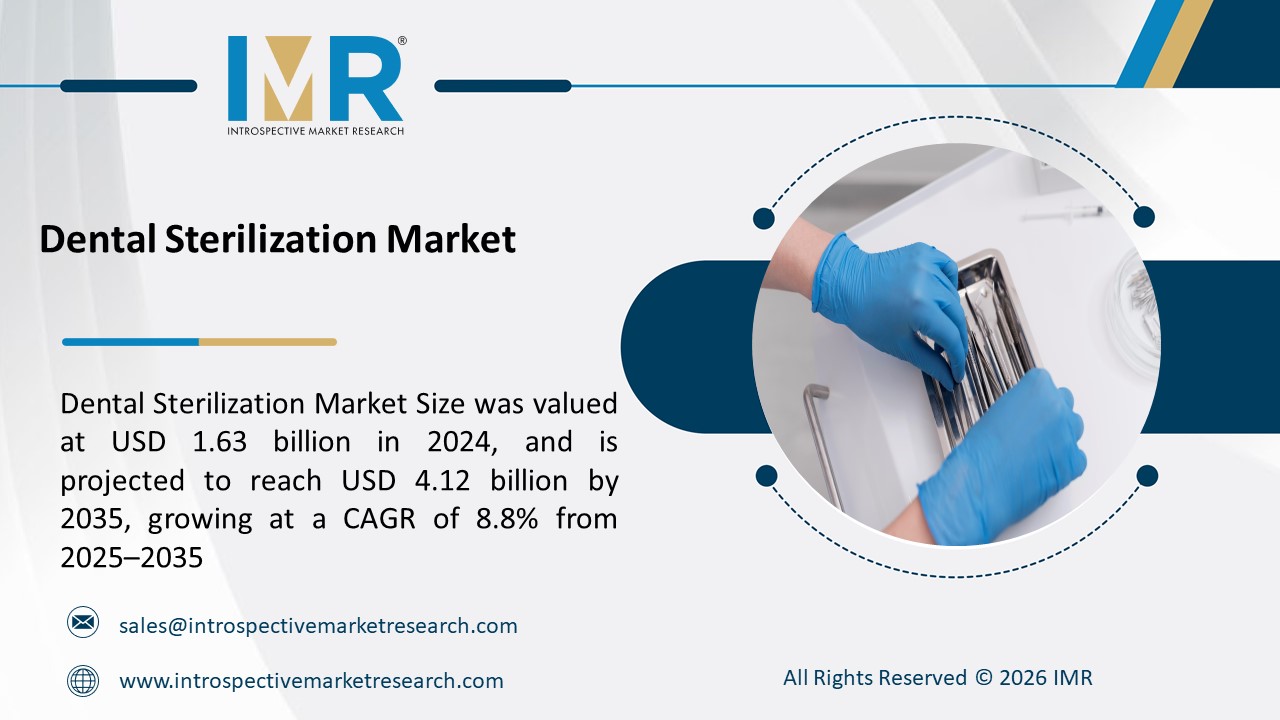Hydroponic Vegetables Market
According to a new report published by Introspective Market Research, titled, ?Hydroponic vegetable Market by Type, Farming Type, Origin, Distribution Channel: Global Opportunity Analysis and Industry Forecast, 2024?2032,?
the global Hydroponic Vegetables market size was valued at $11.59 billion in 2023, and is projected to reach $21.22 billion by 2032, registering a CAGR of 6.59% from 2024 to 2032.
The global hydroponic vegetables market is experiencing significant growth, driven by increasing consumer demand for fresh, locally grown produce, and the limitations of traditional agriculture. Hydroponics is a soilless method of growing plants, typically vegetables, in a water-based, nutrient-rich solution. This method allows for higher yields, faster growth, and reduced water usage compared to conventional farming. The market's expansion is fueled by technological advancements, increased awareness of sustainable farming practices, and the pressing need for efficient agricultural solutions in urban areas.
According to the global Hydroponic Vegetables market analysis, the market is segmented into Vegetable Type, Farming Type, Origin, Distribution Channel and region. By Vegetable Type, the market is categorized into Cucumber, Lettuce, Spinach, Peppers, and Tomatoes. By Farming Type, the market is categorized into Indoor and outdoor. By Origin, the market is categorized into Nature & Organic, Conventional. By Distribution Channel, the market is categorized into Hypermarket/Supermarket, Grocery Stores, Unorganized Small Stores, Whole Foods & Specialty Store, Bulk Suppliers & Distributors. By region, it is analyzed across North America (U.S.; Canada; Mexico), Eastern Europe (Bulgaria; The Czech Republic; Hungary; Poland; Romania; Rest of Eastern Europe), Western Europe (Germany; UK; France; Netherlands; Italy; Russia; Spain; Rest of Western Europe), Asia-Pacific (China; India; Japan; Southeast Asia, etc.), South America (Brazil; Argentina, etc.), Middle East & Africa (Saudi Arabia; South Africa, etc.).
Innovations in controlled environment agriculture (CEA) technologies, such as LED lighting, automated nutrient delivery systems, and climate control, have revolutionized hydroponic farming. These technologies enhance crop quality and yield while reducing operational costs and resource use. For example, modern LED grow lights can be finely tuned to provide the exact spectrum of light needed for optimal plant growth, leading to more efficient photosynthesis and energy use. Automation in nutrient delivery ensures plants receive precise amounts of nutrients, minimizing waste and promoting robust growth. As these technologies become more accessible and cost-effective, they are enabling broader adoption of hydroponics among commercial growers and hobbyists alike.
A significant opportunity in the hydroponic vegetables market is the growth of urban agriculture. With increasing urbanization, the demand for locally grown, fresh produce has risen, while available arable land has decreased. Hydroponic systems are ideally suited for urban settings, where they can be implemented in vertical farms, greenhouses, and even on rooftops, allowing for efficient use of space and resources. This proximity to urban centers reduces the transportation costs and carbon footprint associated with delivering fresh produce, catering to the growing consumer preference for sustainable and locally sourced food. Urban hydroponic farms can also contribute to food security by providing a steady supply of fresh vegetables year-round, regardless of external climate conditions.
Global Hydroponic Vegetables Market, Segmentation
The Hydroponic Vegetables market is segmented based on type, farming type, origin, distribution channel, and region.
Farming Type:
The Indoor farming segment is set to lead the growth of the hydroponic vegetables market. This segment focuses on growing vegetables in controlled indoor environments such as greenhouses, vertical farms, and dedicated indoor hydroponic systems. Indoor farming offers multiple advantages, including year-round production, protection from adverse weather conditions, and precise control over environmental factors such as temperature, humidity, and lighting. These controlled settings enhance plant growth and yield, outperforming traditional outdoor farming methods.
Indoor farming meets the increasing demand for fresh, locally sourced produce in urban areas, where space for traditional agriculture is limited. With urbanization on the rise and available farmland shrinking, indoor farming presents a sustainable solution to the growing need for vegetables. Technological advancements, such as vertical farming systems and LED grow lights, further improve productivity and efficiency, establishing the Indoor segment's dominance in the hydroponic vegetables market. As consumers increasingly value sustainability and seek healthier food options, the Indoor farming segment is expected to maintain its growth trajectory, offering a reliable and eco-friendly supply of fresh vegetables year-round.
Distribution Channel:
The Hypermarket/Supermarket segment, which accounted for 45.10% of the market share in 2022, is driving the growth of the hydroponic vegetables market by providing a wide range of hydroponically grown produce. These retail giants, with their extensive distribution networks and large customer bases, play a crucial role in promoting hydroponic vegetables and raising consumer awareness about their benefits.
Hypermarkets and supermarkets enhance the shopping experience by serving as convenient, one-stop locations where customers can purchase a variety of hydroponically cultivated vegetables alongside other grocery items. This convenience encourages consumer adoption and supports market expansion. Additionally, partnerships between these retailers and hydroponic farms ensure a steady supply of high-quality produce, solidifying their position as key players in the growth of the hydroponic vegetables market.
Region:
North America is currently the dominating region in the hydroponic vegetables market, driven by a combination of technological innovation, consumer demand for organic and locally grown food, and supportive government policies. The United States, in particular, has seen significant investment in hydroponic farming from both private enterprises and public initiatives. The presence of major industry players, extensive research and development activities, and a well-established infrastructure for controlled environment agriculture contribute to North America's leadership in this sector. Additionally, the region's emphasis on sustainable agricultural practices and local food production aligns well with the benefits offered by hydroponic farming, further boosting its adoption and market growth.
Some of the leading Hydroponic Vegetables market players are
- Bright Farms Inc (U.S.)
- Gotham Greens (U.S)
- Soave Enterprises LLC (U.S)
- Plenty Unlimited Inc (U.S.)
- Bowery Farming (U.S.)
- Hollandia Produce, L.P (U.S.)
- AeroFarms (U.S.)
- Millennium Pacific Greenhouses Ltd (Canada)
- Platinum Produce Company (Canada)
- Village Farms International, Inc (Canada)
- TruLeaf Sustainable Agriculture Ltd. (Canada)
- AMCO Produce Inc (Canada)
- VertiFarm (Israel)
- Emirates Hydroponics Farms (UAE), and Other Major Players
Key Industry Developments
- In May 2022, Advanced Container Technologies, Inc., made headlines with its innovative approach to bringing fresh produce to consumers. The company unveiled its GrowPods, a series of modular hydroponic farms designed to provide grocery stores with the capability to cultivate and sell ultra-clean and fresh strawberries, lettuce, kale, and micro-greens. What sets GrowPods apart is their self-contained nature, allowing them to be conveniently placed as close as the store's parking lot, enabling a true farm-to-table experience for customers. This announcement represents a significant development in the hydroponic vegetables market, offering retailers a sustainable and efficient means of meeting the growing demand for locally sourced, high-quality produce.
- In June 2022, Farm has collaborated with IKEA to cultivate premium herbs within the dining establishments of three IKEA outlets in Germany. This strategic partnership aims to enhance the company's competitive standing in the market.
- In December 2023, Spread Co., Ltd. presents Techno Fresh, a technique that miraculously doubles the shelf life of chopped lettuce while preserving its quality, flavor, and freshness. Techno Fresh combines cutting-edge processing with vertical farming for prolonged freshness.
Key Findings of the Study
- The global hydroponic vegetables market was valued at $11.59 billion in 2023 and is projected to reach $21.22 billion by 2032, with a compound annual growth rate (CAGR) of 6.59% from 2024 to 2032.
- Technological advancements in controlled environment agriculture (CEA), such as LED lighting and automated nutrient delivery systems, are driving the growth of the hydroponic vegetables market by enhancing crop quality, yield, and operational efficiency.
- Urban agriculture presents a significant opportunity for market growth, as hydroponic systems offer a sustainable solution to meet the increasing demand for fresh produce in urban areas, where available farmland is limited.
- Urban agriculture presents a significant opportunity for market growth, as hydroponic systems offer a sustainable solution to meet the increasing demand for fresh produce in urban areas, where available farmland is limited.






